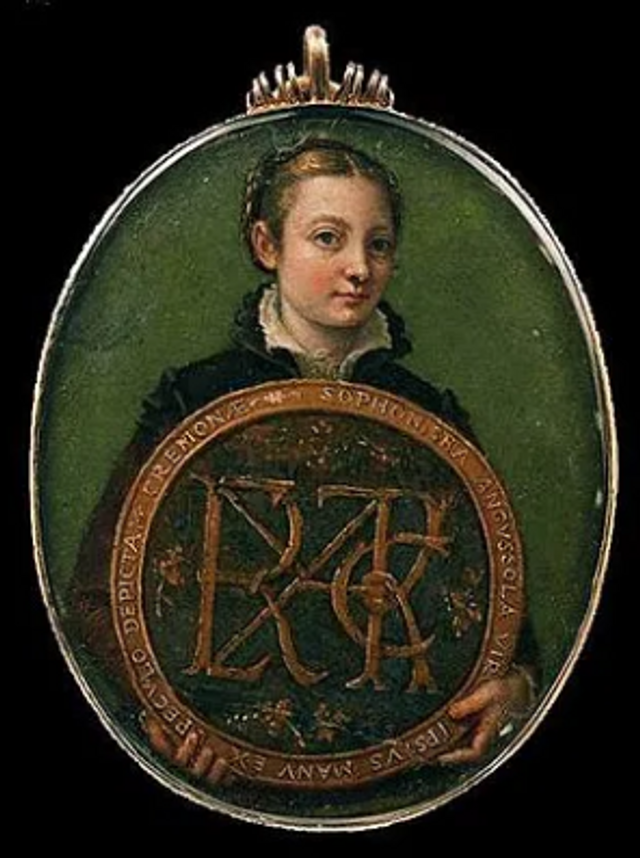
Sofonisba Anguissola
Sofonisba Anguissola was an Italian Renaissance artist, born in Cremona, Italy, in 1532. She is known for her portraits and self-portraits, which are characterized by their emotional depth and realism. She was one of the few women of her time to gain recognition as a professional artist and her work was admired by many notable figures of the era, including Michelangelo and Vasari.
Anguissola's training began at a young age and was encouraged by her father, who recognized her talent. She studied with several masters, including Bernardino Campi and Bernardino Gatti. Her early work was focused on portraiture, and she quickly became known for her ability to capture the personality and character of her subjects.
In 1559, Anguissola was invited to the Spanish court of Philip II, where she served as a lady-in-waiting and painted portraits of the royal family. During her time in Spain, she also continued to paint and develop her skills, and her work was highly regarded by the court and the Spanish nobility.
Anguissola's career was groundbreaking for a woman of her time, and her success paved the way for other female artists to pursue careers in the arts. Her legacy is also notable for her role in the development of the genre of female self-portraiture, which she pioneered with her many self-portraits, including her iconic "Self-Portrait at the Easel" (1556).
Anguissola's work continues to inspire and influence artists today, and her contributions to the field of art history have helped to challenge traditional ideas about gender and the arts. In this blog post, we will explore the life and work of Sofonisba Anguissola in more detail, discussing her art, her influence on the Renaissance, and her impact on the history of women in the arts.
Stay tuned for an in-depth look at Anguissola's fascinating life and career, including her early training, her time at the Spanish court, and her lasting legacy in the world of art.
Learn More Resource Links: